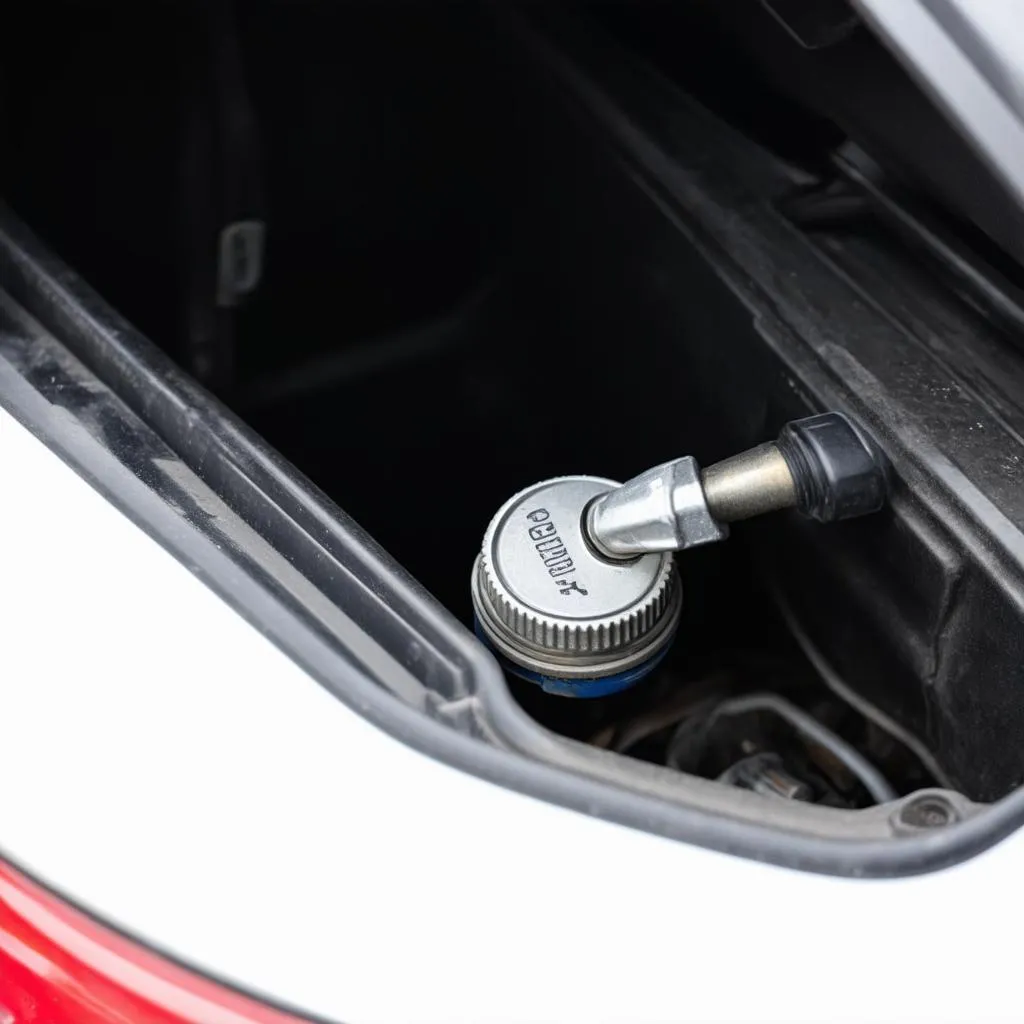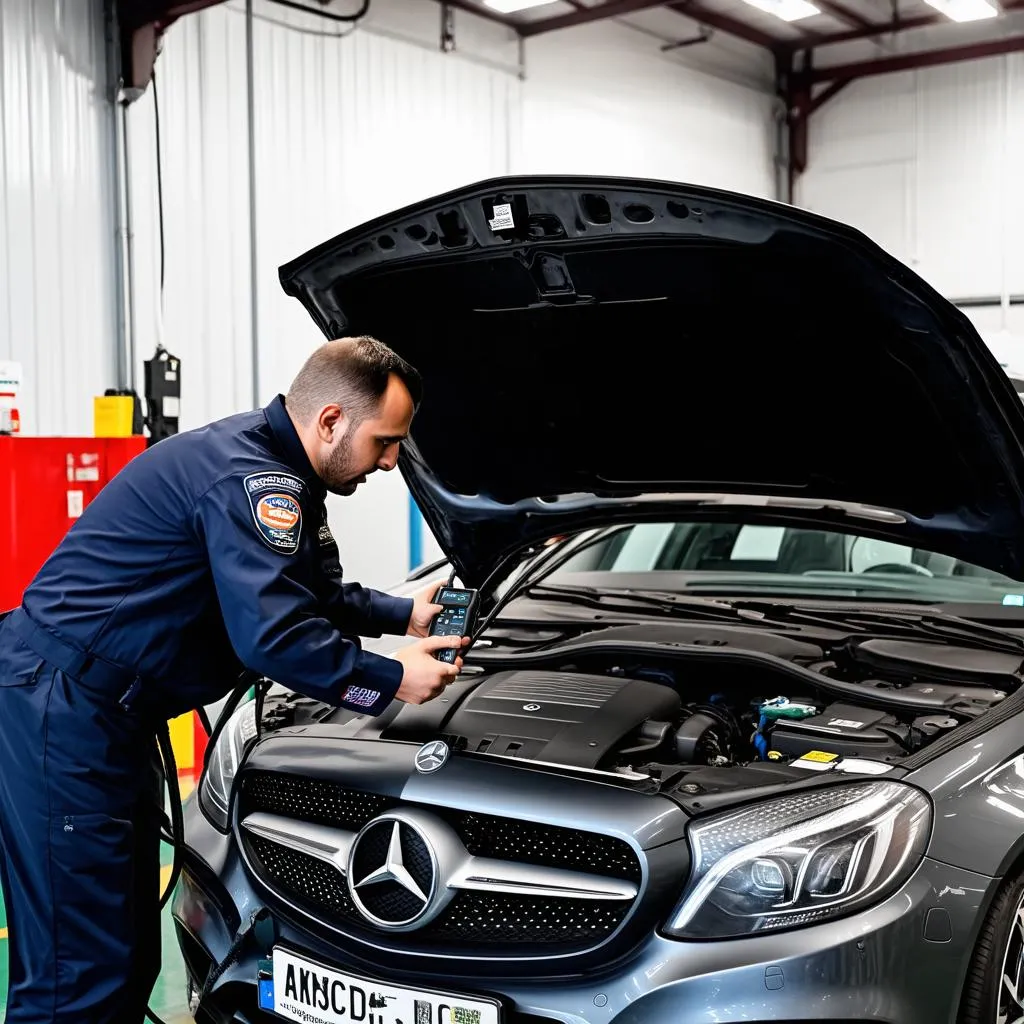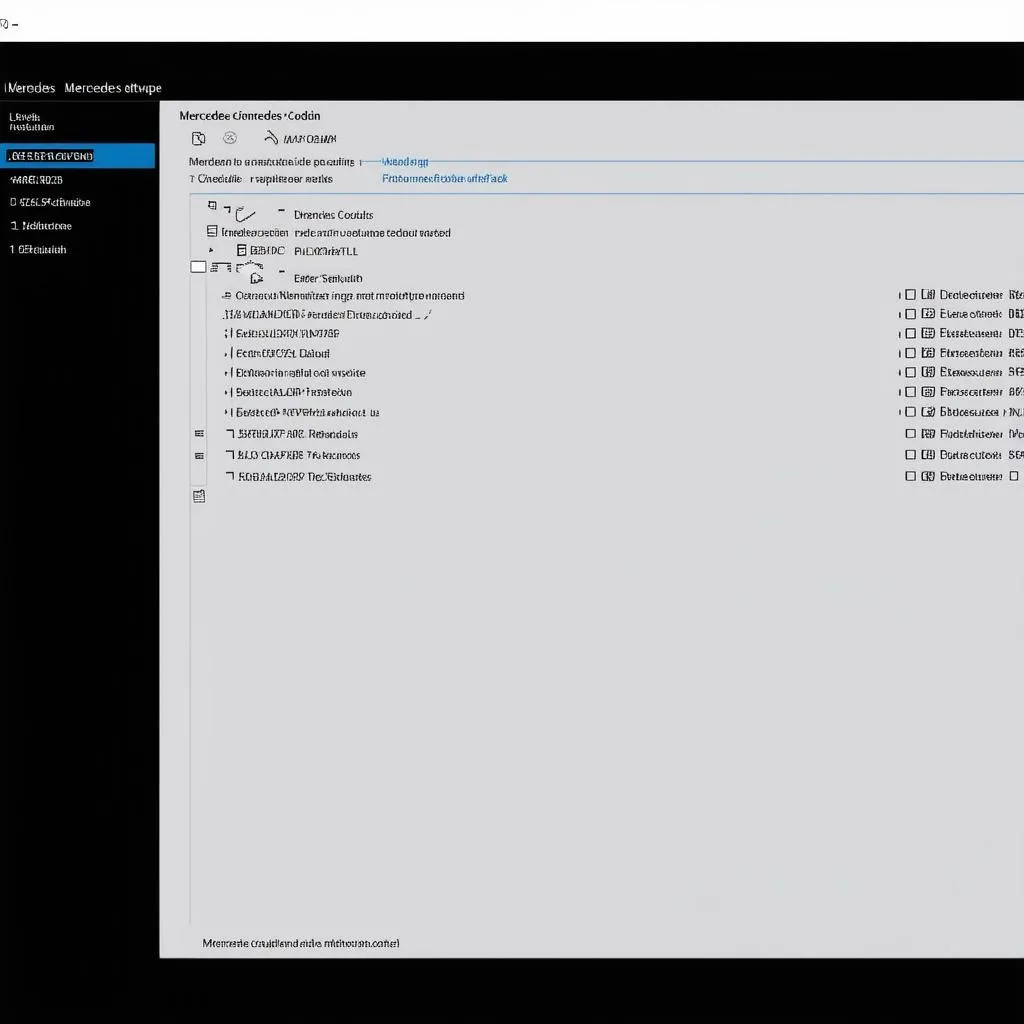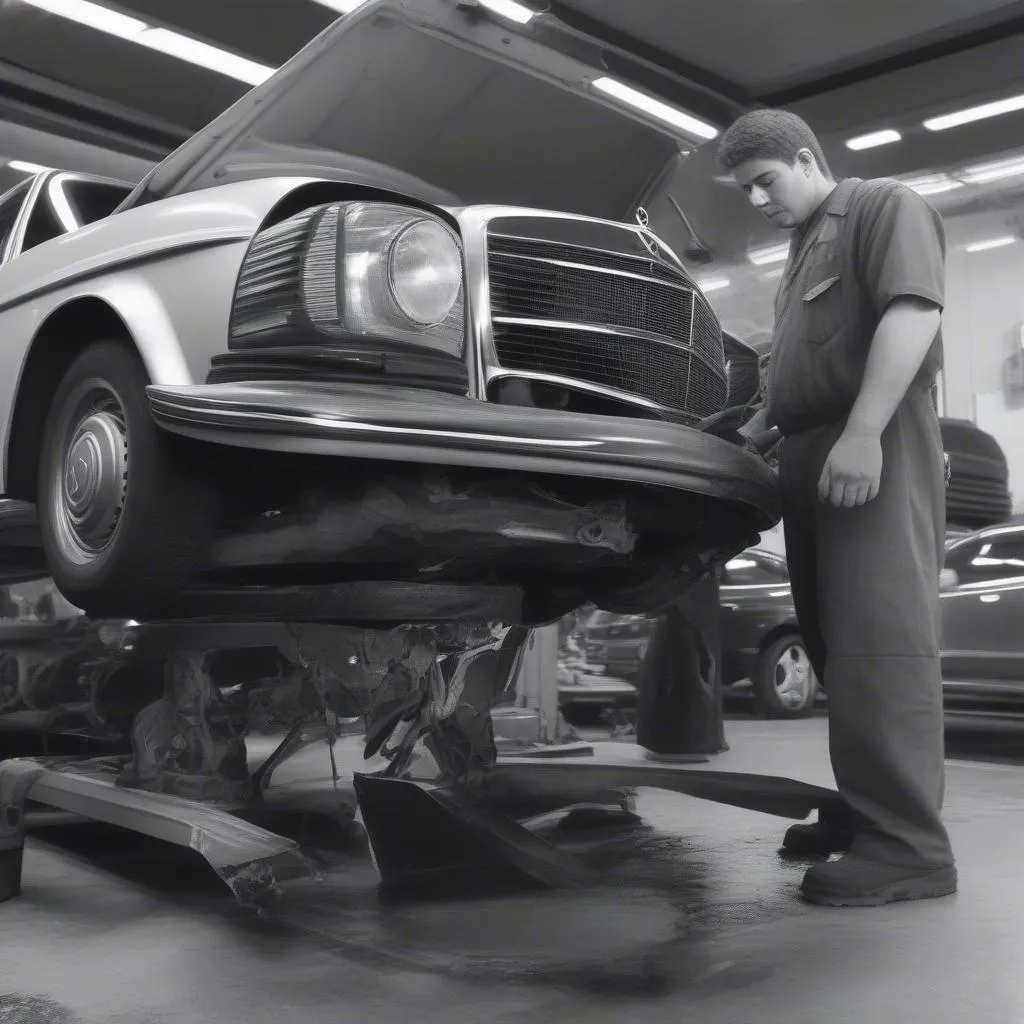Seeing the engine diagnostic light illuminate on your Mercedes dashboard can be unsettling. This amber or yellow light, often resembling an engine outline or the inscription “Check Engine,” signals a potential issue detected by your car’s sophisticated onboard computer system.
This article dives into the common causes behind the engine diagnostic light in Mercedes vehicles and outlines the necessary steps to take when it appears.
Understanding the Mercedes Engine Diagnostic Light
Your Mercedes is equipped with an intricate network of sensors constantly monitoring various systems, including the engine, transmission, emissions, and more. When one or more sensors detect an anomaly exceeding pre-programmed parameters, it triggers the engine diagnostic light, alerting you to a potential problem.
While the illumination of this light doesn’t necessarily indicate a catastrophic failure, it’s crucial not to ignore it. Early detection and diagnosis can prevent minor issues from escalating into major, costly repairs.
Common Causes of Engine Diagnostic Light in Mercedes
A range of issues can trigger the engine diagnostic light in your Mercedes. Some of the most common culprits include:
1. Oxygen Sensor Issues
Oxygen sensors play a vital role in monitoring the exhaust gases and ensuring the optimal air-fuel mixture for efficient combustion. A malfunctioning sensor can disrupt this balance, leading to increased emissions, reduced fuel economy, and potential engine performance issues.
2. Mass Air Flow (MAF) Sensor Problems
The MAF sensor measures the amount of air entering the engine, which is crucial for determining the correct fuel injection. A faulty MAF sensor can lead to poor engine performance, rough idling, and increased fuel consumption.
3. Spark Plug or Ignition Coil Failure
Spark plugs ignite the air-fuel mixture in the combustion chamber. Worn-out spark plugs or faulty ignition coils can cause misfires, leading to reduced engine power, rough idling, and potentially even engine damage.
4. Catalytic Converter Problems
The catalytic converter plays a crucial role in reducing harmful emissions. A failing catalytic converter can trigger the engine diagnostic light, accompanied by symptoms like reduced engine performance, a sulfur-like smell from the exhaust, and potentially even stalling.
5. Loose Gas Cap
Surprisingly, a loose or missing gas cap can also trigger the engine diagnostic light. This happens because the fuel system is pressurized, and a loose gas cap can cause a leak in the system.
 Loose Gas Cap
Loose Gas Cap
What to Do When Your Mercedes Engine Diagnostic Light Turns On
-
Don’t Panic: While the illuminated light signals a problem, it doesn’t always mean an immediate breakdown.
-
Assess Your Driving Conditions: Note if the light is steady, blinking, or flashing. A blinking or flashing light may indicate a more severe issue requiring immediate attention.
-
Check Your Gas Cap: Ensure your gas cap is securely tightened.
-
Monitor for Performance Issues: Observe any changes in your car’s performance, such as rough idling, reduced power, strange noises, or increased fuel consumption.
-
Retrieve Diagnostic Trouble Codes (DTCs): The most effective way to pinpoint the issue is to read the DTCs stored in your car’s computer. You can do this using an OBD-II scanner, readily available for purchase or at most auto parts stores.
-
Seek Professional Help: If the problem persists or you’re uncomfortable diagnosing the issue yourself, it’s best to consult a qualified mechanic specializing in Mercedes vehicles.
 Mechanic Diagnosing Car Issue
Mechanic Diagnosing Car Issue
Frequently Asked Questions about Mercedes Engine Diagnostic Lights
Q: Can I still drive my Mercedes with the engine diagnostic light on?
A: While you might be able to drive for a short distance, it’s not advisable. Ignoring the light could potentially worsen the underlying issue, leading to more extensive and expensive repairs later on.
Q: What does a flashing engine diagnostic light mean?
A: A flashing light usually indicates a more critical problem, such as a severe engine misfire, which could damage the catalytic converter if left unattended. It’s best to stop driving and have your vehicle towed to a qualified mechanic immediately.
Q: Can I use any OBD-II scanner to diagnose my Mercedes?
A: While a generic OBD-II scanner can read basic codes, investing in a more advanced scanner specifically designed for Mercedes vehicles is recommended. These scanners can access manufacturer-specific codes and provide more detailed information about the problem. You can explore a range of diagnostic tools suitable for Mercedes vehicles on Cardiagtech.
Q: How often should I get my Mercedes serviced?
A: Adhering to the manufacturer’s recommended service intervals is crucial for maintaining the health and longevity of your vehicle. Regular maintenance helps detect and address minor issues before they escalate into major problems.
Keep Your Mercedes Running Smoothly
Addressing the engine diagnostic light promptly is essential to ensure the longevity and performance of your Mercedes. While a simple fix like a loose gas cap might be the culprit, don’t hesitate to seek professional assistance for proper diagnosis and repair. Regular maintenance and prompt attention to warning signs are crucial for a smooth and enjoyable driving experience.
For more information on diagnostic tools and resources for your Mercedes, visit CARDIAGTECH.


